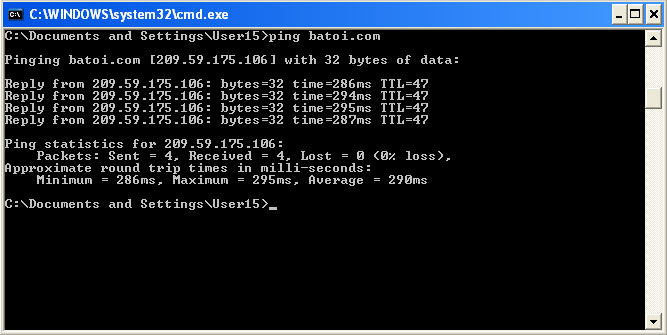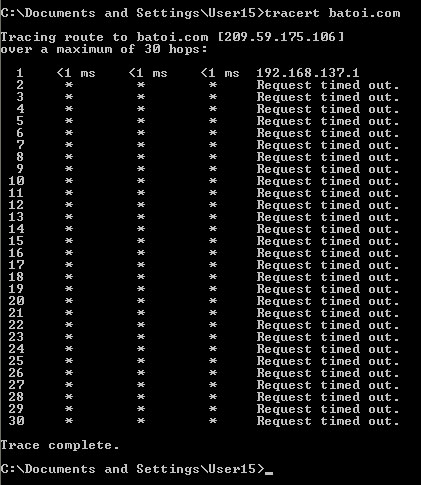Overview of Batoi Hosting
Renew Your Domain Name with Batoi
Protect or Lock Your Domain Name with Batoi
View Action History of Your Domain Name
Manage Name Servers for a Domain Name
Forward a Domain Name to a Different Website
Handle Privacy Protection for a Domain Name
Domain Name Whois Data Reminders from Batoi
Modify the Contact Details of Your Domain Name
Backup Your Website with cPanel on Linux
Managing DNS Records in Linux Hosting via cPanel: A Comprehensive Guide
Create FTP Accounts in Your Linux Hosting using cPanel
Backup and Restore Your Linux Hosting Account via cPanel
Effortless 301 and 302 Redirects in Linux Hosting: A Detailed cPanel Guide
How to Seamlessly Manage DNS Records with Batoi's Premium DNS Service through Your Domain Control Panel
Mastering Contact Management within Batoi's Domain Control Panel
Step-by-Step Guide: Managing Business/Enterprise Email via My Domain Control Panel
How to Efficiently Manage Users and Assign Administrative Roles in Google Workspace
A Complete Guide to Purchasing and Managing Google Workspace through Batoi Hosting Control Panel
Effortless Migration from cPanel Email to Google Workspace: Your Step-by-Step Guide
Setting Up Google Workspace Using cPanel: A Comprehensive Guide
How to Add an SPF Record to Your DNS Settings for Email Security
Setup of Microsoft Office 365 Using cPanel: A Comprehensive Guide
Reviewing Your Linux Hosting Resource Allocation and Usage in cPanel
Creating and Managing Sub-domains with cPanel on Linux
How Do I Emulate DNS Change on My PC?
Effortless Migration from cPanel Email to Microsoft Office 365: Your Step-by-Step Guide
How to Set up MFA for Your Microsoft Office 365 Outlook Account
Setting up POP or IMAP Email on an Apple iPhone
Creating and Managing MySQL Databases with cPanel on Linux
How to Fix the Error '0x800CCC1A' in Microsoft Outlook?
How to Fix the Error '0x800CCC78' in Microsoft Outlook?
Setting up Email Account on Your Mac Mail Application
Installing WordPress within Your Hosting Account with cPanel on Linux
Setting up POP or IMAP Email on an Android Phone
Setting up Mozilla Thunderbird as Your Email Client in Windows PC
Setting up Microsoft Outlook as Your Email Client in Your Windows PC
Setting up Mozilla Thunderbird as Your Email Client in Mac
Creating Email Accounts with cPanel on Linux
Creating More FTP Accounts with cPanel on Linux
Accessing cPanel and Webmail on Linux
Generate a Certificate Signing Request (CSR)
Generate the Domain Secret or the Authorization Code for Your Domain Name
How to Fix the Error '0x800CCCDD' in Microsoft Outlook with IMAP Server?
Comprehensive Guide to Managing PHP Settings in cPanel on Your Linux Hosting Account
Integration of Google Analytics on Your Website
My Emails Are Bouncing Back. What Should I Do?
What should I do when I cannot access my email or website on My Windows PC?
Password Protect Files and Folders with cPanel on Linux
Transfer Your Domain Name from your Current Registrar to Batoi
Uploading Your Files with an FTP client (FileZilla)
What should I do when I cannot access my email or website on My Windows PC?
This article describes the procedure to check if you are not able to access your email/website on your Windows PC.
If you are not able to access your website, follow the below procedure to check.
- First check whether you are able to access other websites by typing the Url '(for ex: google.com)' in a different tab in your web browser.
- If you are unable to access any other site, then check your internet connection to ensure that it is working perfectly. In case there is an internet failure check with your 'Internet Service Provider (ISP)' immediately to resolve the problem.
- Once you are sure that your internet is working fine and you are able to access all other websites excepting yours, then go to 'Start>>All Programs>>Accessories>>Command Promt' . This will give you a window like the one below.
- In the 'Command Prompt' type, 'ping' followed by a space and then '(your domain name)' and press 'Enter'. It should give you a result with your particular domain IP address instantly as shown in Figure 1.
- To do so go to 'Start>>All Programs>>Accessories>>Command Prompt'
- Right-click on Command Prompt and select 'Run as Administrator'
- Then type 'ipconfig /flushdns' command and press 'Enter'
- If the command was successful, you will see the following message as shown in Figure 2.
- Repeat 'Point No. 3' once again and this time it should give you back the 'Reply from IP' result. However, if you see a "timed out" error instead of a reply, then you should conclude that 'Your IP must have been blocked at the gateway.'
- To unblock your IP address from the gateway you need to provide your IP to 'Batoi Support'. To find your IP address visit here. The page shall give you your IP address. Send the same to 'Batoi Priority Support' to get it unblocked. Upon unblocking the IP you should be able to access your website.
- However, if you are still not able to access your website, then you need to do a 'traceroute test'
Note: Traceroute is a command which can show you the path a packet of information takes from your computer to one you specify. It will list all the routers it passes through until it reaches its destination, or fails to and is discarded. It will tell you how long it takes to pass from one path to the other. - To do so go to 'Start>>All Programs>>Accessories>>Command Prompt'
- Type 'tracert' followed by a space, then 'your domain name' and press Enter.
- It will give you a series of traceroute process on the screen as shown in Figure 3.
- You need to write these details to a file. To do so, type 'tracert (your domain name)>C:/trace-root-report.txt' in your 'Command Promt' and press 'Enter'.
- Upon doing so you can see a text file named 'trace-root-report.txt' already been created in the 'C:' drive of your computer.
- Allow the command to execute completely in the Command Prompt. Upon successful execution the information will get stored in the 'trace-root-report.txt' file. Send this file to 'Batoi Priority Support Team' for further analysis.

Note: Your DNS cache stores the locations (IP addresses) of webservers that contain pages which you have recently viewed. If the location of the web server changes before the entry in your DNS cache updates, you will be unable to access the site. So you may need to clear your DNS cache. Once you clear your DNS cache, your computer will query nameservers for the new DNS information.




























